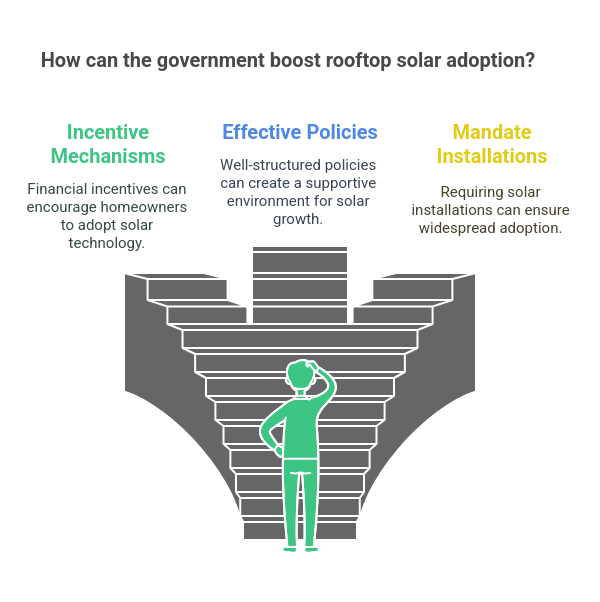India’s Rooftop Solar Industry: A Promising Future
Chasing a stiff 2022 target of 40 GW, India’s rooftop solar industry is finally coming into its own. Registering a phenomenal growth of 113 percent over the past year, the country’s rooftop solar capacity recently crossed the 1-GW mark. This milestone should inspire the industry to give a much-needed impetus to this nascent segment and set the pace for unprecedented capacity additions in years to come.
Favorable Policies Driving Rooftop Solar Growth
Rooftop solar in India has everything going for it—favorable government policies, streamlined processes, an efficient regulatory mechanism, and an investor-friendly business environment. However, achieving the 40 GW target will require decisive measures and enhanced growth strategies.
Commercial and Residential Market Potential
While the commercial and industrial categories are driving much of the growth, accounting for 63 percent of the installed rooftop solar capacity, it is the dormant residential market that holds enormous potential. Hartek Group believes that if even half of India’s 205 million households install rooftop solar projects with an average capacity of just 2 KW, the country can achieve 20 GW capacity quickly.

Government’s Role in Boosting Rooftop Solar
The government can act as a catalyst for growth by introducing:
-
Incentive-based mechanisms
-
Formulating effective policies
-
Mandating solar PV installations on all residential buildings
Successful State-Level Policies
More states should follow the Delhi government’s example, which offers a generation-based incentive of Rs 2 per unit (kWh) to residential consumers, over and above the central government capital subsidy of 30 percent. The Delhi government has also allowed third-party solar developers to install solar PV plants, easing the process for residents.
Net Metering: A Game Changer for Rooftop Solar
A well-thought-out net metering policy can significantly impact the growth of rooftop solar. It allows households to:
-
Save on electricity bills
-
Earn from the power they produce
Through net metering, residents can source supply both from the grid and their solar PV plants. If one source stops, the system automatically switches to the other. Reverse net metering is another attractive option, enabling consumers to send excess electricity back to the grid and get remunerated. However, the lack of proper implementation is hindering its potential.
Challenges Facing Residential Rooftop Solar
The major roadblocks hindering growth in the residential rooftop category include:
-
High upfront costs of solar systems
-
Lack of financing options
-
Poor awareness levels
-
Difficulties in operation and maintenance

Cost of Rooftop Solar Systems
While the cost of rooftop solar has been progressively declining at a rate of 12% per annum over the past four years, a typical 1-KW solar system without battery costs around Rs 65,000-70,000 with a 30% subsidy. Since solar modules account for 60 percent of a solar PV plant’s cost, the development of cheaper modules and economies of scale will make rooftop solar financially more attractive.
Financing Challenges and Solutions
A major challenge for homeowners is the lack of low-cost financing. Banks and financial institutions should offer low-interest loans for rooftop solar projects, making it as simple as applying for a car or home loan.
Need for Increased Awareness
The lack of awareness about the benefits of rooftop solar also limits its adoption. During solar awareness drives, it was observed that only a small fraction of people knew how rooftop solar projects could:
-
Save on electricity bills
-
Provide assured returns
-
Offer 30 percent subsidies to domestic consumers
To bridge this gap, the Ministry of New and Renewable Energy (MNRE) has introduced a centralized online facility that enables consumers to apply for rooftop solar installations with ease.
Skill Development and Workforce Training
Another issue is the lack of skilled manpower for installation, operation, and maintenance (O&M). While the commercial and industrial categories have sufficient technical manpower, the residential category lacks adequate support.
To address this:
-
A large technical workforce should be trained in solar installation and O&M.
-
Companies like Hartek Power are introducing portable 1-KW and 2-KW kits that simplify installation, making it as easy as installing a satellite dish.
Rooftop Solar for Rural Electrification
Since 70% of India’s population resides in villages, rooftop solar can play a significant role in electrifying rural and remote areas that are not connected to the grid.
-
Decentralized cluster power generation can reduce transmission costs in sparsely populated villages.
-
Rooftop solar offers a cost-effective solution to electrify regions where grid connectivity is challenging.
Rooftop Solar: Powering a New India
By empowering rural India with reliable electricity, rooftop solar is doing what the government alone could not achieve. For reliable rooftop solar solutions, contact Hartek Group – your trusted partner in renewable energy. It is lighting up homes that previously had no access to electricity, creating a foundation for a self-sufficient and sustainable India.
FAQ’s:-
1. What is the current rooftop solar capacity in India?
India’s rooftop solar capacity recently crossed the 1-GW mark, growing by 113% in the past year.
2. What are the key challenges for rooftop solar in India?
High upfront costs, lack of financing, poor awareness, and inadequate technical manpower hinder growth.
3. How does net metering benefit rooftop solar users in India?
Net metering allows users to save on electricity bills and earn by sending excess power back to the grid.
4. What government incentives are available for rooftop solar in India?
Residential consumers get a 30% subsidy, and some states offer additional incentives like generation-based rewards.
5. How can the residential rooftop solar market in India grow?
Increased awareness, low-interest loans, policy support, and simplified installation can boost adoption.
Share:
Explore More
Keep up-to-date with the most trending news stories that are shaping the world today.






